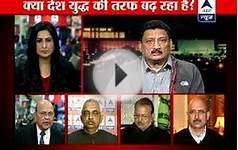Secondary Education
In the course of the final 4 years of Indian school education a bridge is built between between the foundations laid by primary education, and the vocational or tertiary education that may follow. Although overall standards are controlled by examining boards, the curriculum is still largely based on the system that the British colonialists left behind. Pupils and their parents may choose between state or commercial schools, or those with associations with religious dogmas.Vocational Education
Young people who do not wish to go on to tertiary education, or who fail to complete secondary school often enroll at privately-owned vocational schools that specialize in just one or only a few courses. In do doing they prepare themselves to face the the impact of the liberalization and globalization of the Indian economy - sadly, though many young women are still denied this opportunity.Tertiary Education
 India is justifiably proud on its universities which are mainly funded by state governments, and many are centers of excellence. The 12 larger ones are funded by the central government though, which is more generous in its financial support.
India is justifiably proud on its universities which are mainly funded by state governments, and many are centers of excellence. The 12 larger ones are funded by the central government though, which is more generous in its financial support.
Although engineering and business colleges are accredited to a central body known as the AICTE, the Medical Council of India moderates all medical colleges. Progress is being made with managing teacher training in a similarly functional way.








